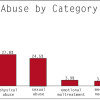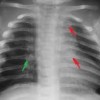Epidemiologic analysis of a cluster of homicides of children in Atlanta
Abstract
Between July 1, 1979, and March 15, 1981, there were 22 unsolved homicides and two unsolved disappearances of Atlanta children. Using epidemiologic methods, we attempted to identify factors that had put children at an increased risk of homicide. That all victims in this cluster were black, killed away from home, and that asphyxiation was overrepresented suggests that the cluster was discrete.… Read more

